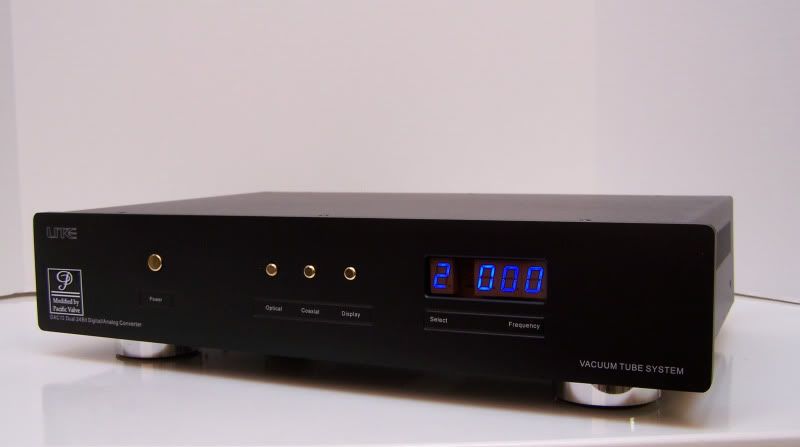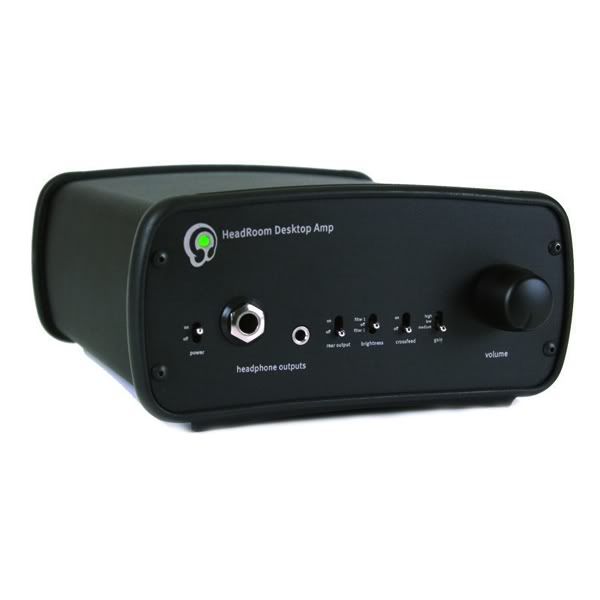muratd
Seeker Of Truth

Posts: 2
|
Post by muratd on Jul 26, 2011 11:36:23 GMT -5
This is my first post.
I have compared the DAC's mentioned above. My system consists of Citation 5.1 or Musical Fidelity M6i, ATC SCM50L. Music is streamed as FLAC from a NAS via SONOS using the digital output for the SONOS (or its analog output when using its DAC). All cables by Chord. I am aware of the differences in prices, I just used the equipment that was available to me. THis is not a scientific comparison. Here are my impressions:
XDA-1
1. XDA-1 as DAC to MF6i pre and power amp, ATC's: music has space, nice air and fills the room. Sound is cold, bass lacking, trebles weird. Midrage not impressive.
2. XDA-1 as DAC and pre to MF6i power amp, ATC's: As above, but the music's spaciousness diminished, orchestral music plays between the speakers.
3. XDA-1 as DAC and pre to citation power amp, ATC's: As above, dont like the sound.
SONOS
1. SONOS as DAC to MF6i pre and power amp, ATC's: Music less spacious, condensed when compared to XDA-1. Sound warmer, more quality base, trebles not extended but better resolved.
2. SONOS as DAC and pre to MF6i power amp, ATC's: Music less spacious, condensed when compared to XDA-1. Sound much improved, even better base, trebles extended and better resolved.
3. SONOS as DAC and pre to citation power amp, ATC's: as above in 2, maybe little loss in base quality.
iDac (approx. $900 retail):
I used the same combinations above and can generally say that the iDAC is not much different from XDA-1 despite being significantly more expensive, but offers little more sonic resolution and more base and is slightly less cold.
REGA:
The Rega was best among all but is also the most expensive (approx $1000 retail). Wonderful sound, nicely extended and defined base and trebles and a really lovely midrange.
Despite similar pricing I would prefer the Rega over the iDac anytime.
Just for the fun of it I fed the XDA-1 (which I hate to return due to around $50 return shipping) the digital output from my MacPro playing FLAC files (my office system). The speakers were active M-Audio BX5a active monitors, using the pre in the Emotiva. This gave the most balanced sound I experienced with the XDA-1. High quality equipment associated with XDA-1 will reveal the limitations of this DAC, wheres the combination above gives a more synergistic effect. Emotiva and BX5a are lacking base and treble therefore this problem does not become an issue here.
Another observation was that the sound of the XDA-1 in my main system got somewhat "better" when I increased to volume, but still remained unsatisfactory.
I like the fit and finish of the XDA-1 a lot. In addition it offers exceptional connectivity. However, I would be willing to pay more if Emotiva improved the sonic quality of this device, without sacrificing the build quality. Maybe a less lavish remote will free up funds to improve the sound?
In summary I am disappointed by the XDA-1 since it has a very cold, soulless and "robotic" sound in my system main system but performs OK in my office system. As the Rega (which costs around >4x more than XDA-1) example shows you get what you pay for and there are no miracles.
|
|
|
|
Post by ribbonking on Jul 26, 2011 13:47:27 GMT -5
Your observations are interesting.
I have two DAC's, the XDA-1 and a Cambridge Audio DacMagic, neither as expensive as your Rega.
I have an Oppo BD-93 and have used a Denon 2910 (955) in my system and have run them through the XDA-1 and also analog directly into a USP-1. I have not observed a massive difference in sound quality.
The DacMagic is used on a separate headphone system.
I just paid to ship an XDA-1 from Florida to California (bought used) for about $20.00 via UPS as I recall so unless you are outside the USA, it shouldn't cost you $50.00 to return it.
I found that the XDA-1 adds a slight emphasis to the bass, different that what you found.
|
|
|
|
Post by sharkman on Jul 26, 2011 19:38:31 GMT -5
Yes, thanks for your observations. I've been trying to improve on my 2 channel system with an Oppo 95 or a Wyred Dac 2 being on my short list. I will check out the Rega as well!
|
|
|
|
Post by Bulletdodger on Aug 8, 2011 14:52:00 GMT -5
I have not heard the XDA-1, but the REGA kicks serious ass. It is sweet sounding and very musical. I like it a lot.
|
|
muratd
Seeker Of Truth

Posts: 2
|
Post by muratd on Aug 27, 2011 8:36:16 GMT -5
More than four weeks later I have no reason to modify my report above. However, using the XDA1 purely as DAC and combining it with another pre helps a lot, but then it is not such a bargain anymore when you use only 1/2 of the device.
|
|
jamrock
Emo VIPs    Courtesy Costs Nothing. Give Generously!
Courtesy Costs Nothing. Give Generously!
Posts: 4,750
|
Post by jamrock on Aug 27, 2011 8:57:15 GMT -5
The technologies involved in the production of sillicons, manufacture outsourcing and the maturity of solid state technology are such that differences between similar solid state components are only going to be very subtle. Sometimes we are going to have a learn to do a great deal of listening before we can identify any real differences.
Real significant changes (I believe) are still ongoing in the manufacture of speakers / subs, power supplies and refinement of room correction technologies. Here are where differences can be readily identified. ;D
|
|
Deleted
Deleted Member
Posts: 0
|
Post by Deleted on Aug 27, 2011 9:01:38 GMT -5
+1
|
|
DYohn
Emo VIPs   
Posts: 18,489
|
Post by DYohn on Aug 27, 2011 9:14:18 GMT -5
The difference between DACs is in the implementation, not in the IC.
I also found the XDA-1 be a well-made unit but to sound thin, lacking bass and midrange clarity and with dampened dynamics likely due to some issue in the analog output stage. The preamp-function was not usable in my setup, although the input switcher is a nice addition. When compared to similarly priced units (in my case from Grant and Cambridge) I felt it fell short, and when compared to higher-end units (in my case from Ayre and Kora) it was no contest and reminded me of the sound of a mid-fi receiver.
YMMV.
|
|
jamrock
Emo VIPs    Courtesy Costs Nothing. Give Generously!
Courtesy Costs Nothing. Give Generously!
Posts: 4,750
|
Post by jamrock on Aug 27, 2011 14:42:45 GMT -5
also, don't forget that little dirty secret we have in audio called R E B A D G I N G. Many of these DACs could be the exact same except for the shell. Like the difference between the Oppo BDP 83 and the Lexicon unit?
|
|
|
|
Post by sharkman on Aug 27, 2011 19:52:10 GMT -5
The difference between DACs is in the implementation, not in the IC. I also found the XDA-1 be a well-made unit but to sound thin, lacking bass and midrange clarity and with dampened dynamics likely due to some issue in the analog output stage. The preamp-function was not usable in my setup, although the input switcher is a nice addition. When compared to similarly priced units (in my case from Grant and Cambridge) I felt it fell short, and when compared to higher-end units (in my case from Ayre and Kora) it was no contest and reminded me of the sound of a mid-fi receiver. YMMV. Yes, those have been my results with the XDA as well, perhaps my speakers are too revealing for the unit. Implementation of the DAC can make all the difference, what Oppo has done with the 95 is winning rave reviews from all over. |
|
hemster
Global Moderator    Particle Manufacturer
...still listening... still watching
Particle Manufacturer
...still listening... still watching
Posts: 51,951
|
Post by hemster on Aug 28, 2011 1:53:38 GMT -5
also, don't forget that little dirty secret we have in audio called R E B A D G I N G. Many of these DACs could be the exact same except for the shell. Like the difference between the Oppo BDP 83 and the Lexicon unit? True. "Badge Engineering" is well and truly entrenched in the A/V world. |
|
|
|
Post by ausman on Aug 28, 2011 3:01:39 GMT -5
and so is the price for those badged units whether it denon, lexicon, emotiva, onkyo, marantz, pioneer or any other brand you wish to own..
|
|
Deleted
Deleted Member
Posts: 0
|
Post by Deleted on Aug 28, 2011 3:55:46 GMT -5
XDA-1 be a well-made unit but to sound thin, lacking bass and midrange clarity and with dampened dynamics likely due to some issue in the analog output stage. You give a possible explanation for the dampened dynamics but can you offer a possible reason why it is "lacking bass" or sounding "thin." I'm not sure what you mean by "thin" but are you saying perhaps that the bass response is rolled off? |
|
DYohn
Emo VIPs   
Posts: 18,489
|
Post by DYohn on Aug 28, 2011 9:10:15 GMT -5
XDA-1 be a well-made unit but to sound thin, lacking bass and midrange clarity and with dampened dynamics likely due to some issue in the analog output stage. You give a possible explanation for the dampened dynamics but can you offer a possible reason why it is "lacking bass" or sounding "thin." I'm not sure what you mean by "thin" but are you saying perhaps that the bass response is rolled off? Yes, sorry, by thin I mean a loss of output in the upper bass region around 250 to 300Hz. This sort of loss makes male or alto female voices sound a little nasal and to lack "chestiness" and can make instruments like a cello or guitar sounds like it's recorded from inside a closet. The lack of bass was a slow roll-off below 100Hz so that the output of the device was down almost -3db @ 55Hz. All of these things can be attributed to too much inductance in the output stage. My Cambridge DACMagic had a similar output characteristic, but it was less noticeable during use than the Emotiva. The XDA output was almost ruler flat above the problem areas, out to beyond 35KHz in my test. But listening to it was the biggest disappointment beyond how it measured. I was struck by how lifeless and analytical it seemed, almost like listening to a tone generator instead of an instrument. Perhaps it's because I prefer the warmer sound of a tube device will all its second-order harmonic distortion, and this was lacking in the XDA-1 because it is more accurate. Regardless, it did not satisfy my taste, although it may very well satisfy others.  |
|
|
|
Post by floridabear on Aug 28, 2011 11:31:04 GMT -5
You give a possible explanation for the dampened dynamics but can you offer a possible reason why it is "lacking bass" or sounding "thin." I'm not sure what you mean by "thin" but are you saying perhaps that the bass response is rolled off? Yes, sorry, by thin I mean a loss of output in the upper bass region around 250 to 300Hz. This sort of loss makes male or alto female voices sound a little nasal and to lack "chestiness" and can make instruments like a cello or guitar sounds like it's recorded from inside a closet. The lack of bass was a slow roll-off below 100Hz so that the output of the device was down almost -3db @ 55Hz. All of these things can be attributed to too much inductance in the output stage. My Cambridge DACMagic had a similar output characteristic, but it was less noticeable during use than the Emotiva. The XDA output was almost ruler flat above the problem areas, out to beyond 35KHz in my test. But listening to it was the biggest disappointment beyond how it measured. I was struck by how lifeless and analytical it seemed, almost like listening to a tone generator instead of an instrument. Perhaps it's because I prefer the warmer sound of a tube device will all its second-order harmonic distortion, and this was lacking in the XDA-1 because it is more accurate. Regardless, it did not satisfy my taste, although it may very well satisfy others.  If it isn't too much trouble, could you post graphs of any measurements you've made? I've not found anything on the XDA-1 as far as measurements. Frequency response, THD, etc.--whatever you are able to measure would be great! |
|
Deleted
Deleted Member
Posts: 0
|
Post by Deleted on Aug 28, 2011 12:00:04 GMT -5
+1 and any details on what you used to measure, thanks.
|
|
DYohn
Emo VIPs   
Posts: 18,489
|
Post by DYohn on Aug 28, 2011 12:54:03 GMT -5
No graphs saved, sorry. I just did this for my own edification like I do with every piece of audio gear I use. My acoustic test setup is an MAudio USB sound card with mic preamp, an Earthworks M30 mic, and the full version of TrueRTA on my laptop. When I'm testing loudspeakers the amp is a Crest Pro200 that I've used for ages. For line level measurements I use my trusty Fluke Scopemeter and the TrueRTA software as a signal generator.
|
|
|
|
Post by savjac on Aug 28, 2011 17:21:32 GMT -5
Interesting. I have never heard the XDA so I really cannot comment on it. I do know it is a looker though. Like David I use a tube Dac for my main rig. It sounds so much more fluid than the small amount of solid state Dacs I have tried. I would get out and try more items, but frankly I am really happy with the sound so I do not feel compelled to mess with it. I did roll the tubes with some nice Yugoslavian ones and was really really surprised at the improvement. Home Rig only mine is silver   Headphone Rig   |
|
DYohn
Emo VIPs   
Posts: 18,489
|
Post by DYohn on Aug 29, 2011 8:48:37 GMT -5
The Lite Audio DAC is very good. The one I preferred over it (and the one still in my HT) is the Scott Nixon Tube DAC with linear P/S. The DAC that stayed in my office (doubling as a headphone amp) is the Grant Tube DAC09.
|
|
Crystara
Minor Hero
  "Don't piss down my neck and tell me that it's raining"
"Don't piss down my neck and tell me that it's raining"
Posts: 34
|
Post by Crystara on Sept 4, 2011 18:50:30 GMT -5
Hi Eastern Electric MiniMax Tube DAC. eeaudio.com/eeaudio_20102.htmThis is the DAC That I think people may be interested in, Sub$800 and using the Sabre Chip ESS Technology 9018 32 bit DAC chip With Sampling rates of 32bit,32KHz,44.1KHz,48KHz and 192KHz a review from home in Australia www.digitalaudioreview.net.au/index.php/audio-reviews/digital-source-reviews/item/175-eastern-electric-minimax-tube-dac, but bearing in mind USB port is only 16/44KHz, if you want the higher rated USB input they are releasing a MiniMax Vacuum Tube DAC Plus model in the next couple of weeks which has the higher rated M2Tech OEM 24bit 192KHz Async USB input and Separate Power Transformers for digital and analog sections , but at around the $1000 mark, Both of these have the ability to bypass tube if you prefer. I hope this helps anyone BTW this is the DAC chip manufacturer that Oppo use for there analog stage  |
|













